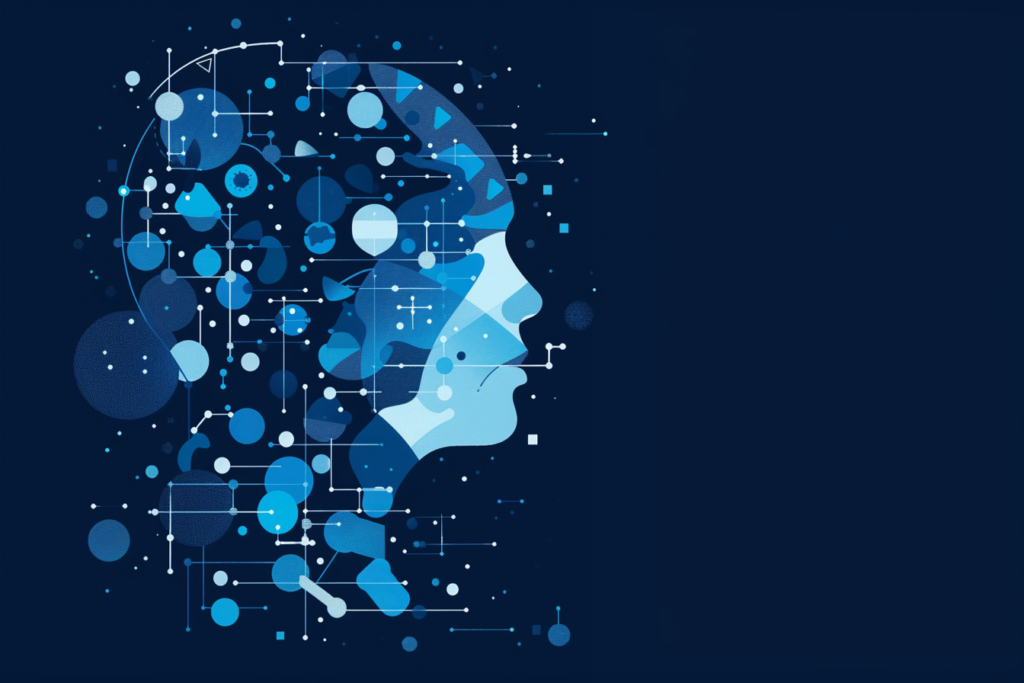Why have neural networks gained considerable importance in AI-powered projects recently? And why are companies like Google and Netflix now using neural networks to boost their machine-learning algorithms? Neural network AI isn’t a recent phenomenon. However, few people are familiar with it, confusing it with Machine Learning, Deep Learning, and Artificial Intelligence.
Today, we’ll shed light on what neural networks are, how they work, and how they help with AI development. If this is something you’re eager to know, join us.
What Are Neural Networks in AI?
The concept first appeared in Chicago in the 1940s, but it took scientists 20 more years until the first single-level model was demonstrated. During a boom in the game industry, research in neural networks took off. In the game industry, multiple operations and actions must be processed at the same time on multi-user platforms. The structure of a neural network is similar to that of game graphics processors, which combine tens of thousands of cores onto one chip.
Neural networks in AI have a structure similar to a biological neural system and function like the human brain’s neural networks. The human brain has networks of highly complex and nonlinear neurons. AI networks also include many different layers of input and output units (neurons) and can transmit signals to other neurons.
Neural networks, Deep Learning, and Machine Learning are interlinked, but there are also distinctions. Deep Learning is a component of ML techniques that uses neural networks with different layers. Neural networks are the basis of deep-learning networks, which learn from data sets. At the same time, Machine Learning embraces a more extensive assortment of algorithms for training modes for deciding or predicting.
Types of Neural Networks in AI
There exist five categories of neural networks, each designed to handle an issue of a specific nature:
- Feedforward
- Convolutional
- Deconvolutional
- Recurrent
- Long short-term memory
| Neural Network Type | Key Features | Common Applications |
| Feedforward | One-directional flow, feedback process | Regression, classification, NLP, facial recognition, computer vision |
| Convolutional | Convolutional layers/filters | Image and video recognition, data analysis |
| Deconvolutional | Reverse of convolutional networks | Image synthesis and analysis |
| Recurrent | Sequential processing, feedback loops, memory | Sales forecasting, market predictions |
| Long Short-Term Memory (LSTM) | Memory cells, long-term information retention | Text prediction, speech/gesture recognition |
The classification of networks is based on how information streams from the input node to the output.
Feedforward Neural Networks
They contain three layers: input, hidden, and output. Information flows through the feedforward neural networks only in one direction: from input to output. The networks utilize the feedback process, which is how they improvise predictions. This is why they’re so frequently used for tasks like regression and classification, NLP, facial recognition, or computer vision.
Convolutional Neural Networks
They are often utilized for classification, analysis, video, and image recognition. Convolutional neural networks heavily depend on convolutional layers or filters that help to single out data’s local models and hierarchical structures.
Deconvolutional Neural Networks
They are utilized in the synthesis and analysis of images. These networks operate using the reverse version of convolutional neural networks. Their strength is identifying signals and features treated by convolutional neural networks as insignificant.
Recurrent Neural Networks
They comprise sequential data processing. Recurrent neural networks are often powered by utilizing time-series data for future outcome prediction. These networks also feature feedback connections, which enable data to flow in loops, thus allowing the networks to preserve the memory of former inputs. Recurrent neural networks possess a unique self-training system that is useful for sales forecasting and market predictions.
Long Short-Term Memory Neural Networks
They are a subtype of recurrent neural networks that deal with sequential data reliance. By including memory cells that save information for a longer time, they tone down the vanishing gradient problem that is tied to recurrent neural networks. Such neural networks are indispensable when it comes to text prediction or speech/gesture recognition.
How Neural Networks Can Mimic Human Brain Processing
The design and functionality of the human brain are at the core of how neural networks run. The human brain uses numerous networks of neurons for information processing and transmission. The same is true with AI and neural networks: they utilize interrelated nodes for complex computations.
- They learn through synaptic adjustments: The process of learning and training in the human brain incorporates the strengthening/weakening of synaptic connections. It’s quite the same with Artificial Intelligence and neural networks: learning is about adapting biases and weights depending on the received data.
- They can recognize patterns: The human brain is highly skillful in recognizing and seeing patterns. This skill is remarkably well copied by neural networks that identify data regularities and patterns. This allows them to perform tasks based on speech and image recognition, just like the human brain can recognize speech or faces.
- They can perform parallel processing: Just like the human brain can process information in parallel, neural networks can work simultaneously. The networks copy the brain’s parallel processing capability and can analyze complex and high-dimensional data effectively.
For now, neural networks are computers that provide a simplified computational model of how the human brain functions. But this model is powerful enough to learn from experience, make intelligent decisions, and see patterns. This is precisely why neural networks are now central to the accuracy of AI research and the effectiveness of creating AI applications from scratch.
Once AI regulations are in place, which may happen very soon, neural networks in AI will drive advancements that we used to consider science fiction.
Neural Networks and Generative AI
Neural networks learn from data. This capability turns them into compelling instruments. A business can feed networks large data sets and thus teach them to perform a wide range of tasks: robots can start recognizing speech, communicating with clients, and driving vehicles. In this case, the learning process is iterative: the more data a network processes, the better it is at making decisions.
What does training encompass? It’s biases and weights. Both parameters determine the strengths with which one neuron can influence another. Backpropagation is the algorithm that makes this possible because it adjusts the biases and weights to diminish the differences between the outputs and desired outcomes.
There are two key reasons why neural networks have become so important in generative Artificial Intelligence: content generation and pattern recognition.
Neural computer networks fuel the capability of AI to generate realistic content (texts, sounds, images) by learning from existing data sets. One of the most modern examples is the generation of deep fake videos after the networks learn from numerous real videos and images how to generate new videos that realistically imitate the voice and appearance of an individual.
Neural computer networks quickly detect patterns and learn from them to provide a highly sophisticated data interpretation. This feature is highly valuable in medical imaging, where neural computer networks recognize patterns in MRI and X-ray scans to identify anomalies and help with diagnosis.
Advantages and Disadvantages of Neural Networks
Like any other technological advancement, the introduction of neural networks has positive and negative sides. Let’s examine both.
Advantages of Neural Networks
- The ability to manage and learn from complex and massive sets of data while extracting informative details and insights that aren’t obvious through most conventional methods and instruments.
- The ability to learn and adapt their weights for performance improvement, adapt to ever-changing conditions, and make accurate predictions even when new data sets are input.
- The ability to process in parallel, thus ensuring highly efficient processing of large and complex data sets for fast interference times and training.
- The ability to scale up for handling large datasets and far-reaching problems; networks can also be trained on distributed computing system models to make use of the power of many servers and processors.
- The ability to tolerate incomplete data for handling input variations and missing information makes neural networks mighty and practical in real-world applications.
Disadvantages of Neural Networks
- They have a black-box nature because there’s hardly a relevant explanation for why the neural systems produce a certain output. This is the reason why banks and financial institutions do not use neural networks for creditworthiness predictions.
- They require much time to develop and expand, even though many coding languages and libraries simplify network development. At times, it is not worth it for pricey engineers to waste weeks of their time to develop something that can be substituted with an algorithm.
- They require many datasets, even more than traditional machine learning algorithms. And the number often exceeds millions of labeled samples. The question is: Why use neural networks if ML algorithms need less data?
- They are more expensive than most traditional algorithms because it takes weeks to train them from scratch. In contrast, traditional ML algorithms will need a few days to complete the task. This is a major drawback for clients who prefer calculating their expenses beforehand.
Summing Up
The practical application of neural networks is immense. The technology is now being used for image classification using CNNs, Google neural machine translations, automatic speech recognition systems with RNNs, detecting diabetic retinopathy with Deep Learning, self-driving cars, Netflix movie recommendations, and more. It is practically everywhere, though we know so little of it.
The impact is enormous. Thanks to the benefits of neural networks, we can now enjoy enhanced user experience and increased engagement. We are transforming transportation and improving road safety. We strengthen the accuracy of medical diagnosis and reduce the level of human error. And we can make cross-language communication easier. This is all done thanks to neural networks.
If you want to know how neural networks can transform your business, let’s chat. Fill in our contact form, and we’ll discuss all the possibilities and beyond.





